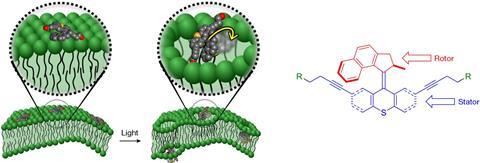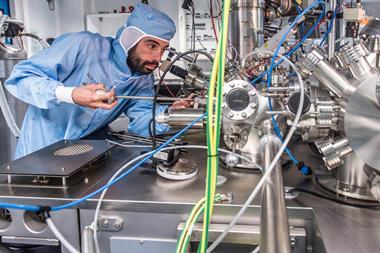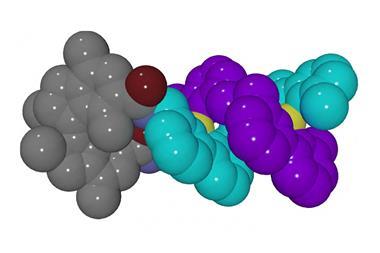Molecular motors can be targeted to drill holes in specific cells to kill them

Molecular machines that can drill through cell membranes could be a new way to target and kill cancer and other diseased cells or to deliver drugs. The work promises a new therapeutic tool to fight many diseases by targeting cells precisely.
’Nobody has ever used a molecular mechanical method to kill cells before by drilling holes in the membranes,’ says author James Tour at Rice University, US. The team based its nanomachines on ultraviolet light activated molecular motors previously made by Ben Feringa at the University of Groningen, Netherlands, for which he won last year’s chemistry Nobel prize. The motors are paddle-like compounds about a nanometre wide and are built piece by piece using standard tools of synthetic organic chemistry to form a rotor head and stator.
However, Tour and collaborators had to build new features into them to make them able to attach to the lipid bilayer membrane of cells and target specific cell-surface recognition sites. Ten modified motors were then designed and tested on live cells including human prostate cancer and breast cancer cells.
Experiments showed that the nanomachines found their way to their intended cell targets and latched onto them but remained inactive. Then, when exposed to ultraviolet light, the motors powered up to two to three million rotations per second and tunnelled through cell membranes around 10nm thick in about a minute. The team showed that the drilled openings caused cells to fall apart and die or could be used to deliver chemicals.
Tour was surprised by how effective the nanomachines were at targeting and killing cells. ‘The cells can die so rapidly – in one minute they explode, not just a gradual cell death over days,’ he says. ‘These nanomachines are trained assassins, homing in on the target and destroying them with exquisite efficiency, with little if any collateral damage.’
While other methods exist to open cell membranes to either deliver drugs or to induce cell death, they cannot accurately target cells without catching healthy cells in the crossfire. Tour says the new nanomachine approach overcomes this by having a double safety mechanism. Although some nanomachines might go off-target, light can be directed to activate the motors in the desired region, thereby killing or treating only the targeted cells. However, ultraviolet light cannot penetrate very far into our bodies so the team is now looking at other ways to activate the motors including near infrared and radio waves.
‘The work represents a completely new, active mechanism of killing cells, reminiscent, yet distinct from the passive membrane disrupting properties of transmembrane pore-forming toxins,’ comments Scott Cockroft, who investigates molecular machines at the University of Edinburgh, UK. ‘It does not require too great a stretch of the imagination to envisage devices incorporating molecular rotors that could selectively target and destroy malignant cancer cells or bacterial pathogens.’
References
V García-López et al, Nature, DOI: 10.1038/nature23657












1 Reader's comment